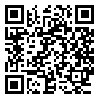Volume 3, Issue 10 (3-2015)
2015, 3(10): 27-39 |
Back to browse issues page
Isf. Univ. of Technol., Isfahan, Iran.
Abstract: (11983 Views)
The objective of the present study was to investigate the pasture vegetation changes using satellite data in Semirom, Isfahan province. This study was conducted in 2004 as a wet year and 2009 as a dry year. The WiFS and AWiFS satellite images were acquired and used for the year 2004 and 2009, respectively. First, the vegetation percentage was simultaneously measured in the two years. Then, considering the environmental factors such as elevation, slope, and slope direction, climatic factors and vegetation indices were derived from the above satellite data and multiple regression equations were prepared using step-wise regression analysis. The intended regression model for each year was used to produce percentage of vegetation cover of the study area. For a suitable pasture vegetation map interpretation, the reclassification technique was used to separate the rangeland use from other land uses, and then the density slicing method was applied. Using suitable thresholds, the rangeland vegetation cover classes including 0-20, 20-30 and 30-40 percent canopy covers were determined. Results showed that the changes in vegetation classes were related to each other and by increasing the area of one class the other one decreased. It was found that the 30-40% and 20-30% classes changed most, and the maximum increase was observed in the 0-20% vegetation cover class due to the area degradation in the other two classes.
| Rights and permissions | |
 | This work is licensed under a Creative Commons Attribution-NonCommercial 4.0 International License. |



